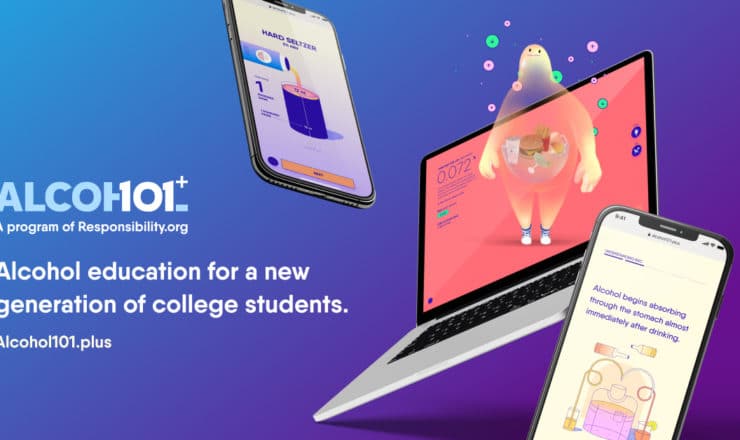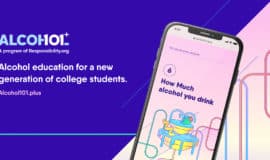Making A Difference with Alcohol on Campus: For Today and For Tomorrow
Fifty years ago, I started my professional career in higher education. While working on my master’s degree at The Ohio State University, I helped run a residence hall with 450 students; two years later, I ran a residence hall with 700 students. With those six years on campus, plus dozens more on other campuses as an administrator and then a faculty member, I found that alcohol misuse was involved with so many of the incidents, problems, and lowered potential. It was with that foundation that I began my prevention work and started national research, writing and consultation.
I offer this half-century perspective because I have witnessed tremendous progress. College student alcohol use overall and higher risk drinking have been reduced (Schulenberg et al., 2021). Today, we have much greater awareness of all that can and should be done to reduce alcohol-related harm and related problems on campus. We have much more extensive research, numerous tools and resources, greater understanding about ways of organizing our work, and organized processes for planning strategically (Anderson and Hall, 2021). We know that, to address alcohol and related problems, a comprehensive campus effort is essential. Using the Institute of Medicine’s Protractor, prevention efforts include Universal, Selective and Indicated approaches; all are essential and each complements the others (Springer and Phillips, 2007).
However, of noteworthy concern is the notable increase in 15 or more drinks in a row at least once in the past two weeks (Schulenberg et al., 2021). NIAAA data (Hingson et al., 2017) reports 1,519 students dying every year due to alcohol-related causes. The College Alcohol Survey (Anderson, 2021) documents campus chief student affairs officers’ assessment that alcohol is involved with 35% of residence hall damage, 36% of violent behavior, 23% of suicide risk, 49% of acquaintance rape, 16% of attrition, and 28% of physical injury.
Three things are important. First, the data documents that problems persist; higher profile incidents on campus related to harmful drinking further document these concerns. Second, numerous helpful resources, strategies and planning efforts exist. Third, these concerns are manageable, and the problems are preventable.
When taking stock of campus efforts, campus leaders can do what they do best: provide leadership to help the campus address alcohol-related concerns. One way of learning more about what is appropriate for a campus is to learn what other campuses are doing, whether at this point in time or over past years and decades. That kind of broad perspective can help shape the campus’ comprehensive program. To help with that, the Higher Education Center for Alcohol and Drug Misuse Prevention and Recovery sponsored a recorded webinar on this topic that is now available to view online.
Another important approach is innovation. I believe strongly in evidence-informed strategies that are locally appropriate; innovative approaches, particularly those that address the stages of change foundations and are relevant to the GenZ population on campus, are helpful for review to be part of the campus’ “toolbox” of strategies. Alcohol 101+ meets these standards as a newly arriving, grounded, innovative resource. Updated with some of the earlier great features of Alcohol 101, such as the BAC educator, Virtual Bar, and brain effects, this newly released resource is user-friendly based on student feedback, has increased grounding with current science, and offers metrics for campus leaders. Specifically, those leading campus efforts can see how those using the resource answer various questions, and then use that data to inform needs-based strategies for the campus. Campus leaders may decide to use Alcohol 101+ as a requirement for all first-year students, with those involved with a conduct or judicial violation, with their selective strategies (per the IOM Model) with identified campus groups or populations, or as part of classroom assignments. The data can be helpful for advancing the science surrounding effective campus-based efforts. Since this resource is new, and most important, since it is free, consider previewing it and trying it out with certain groups; also consider adopting it for specific campus needs – as part of the overall toolbox of the comprehensive campus effort.
In short, the alcohol-related concerns are, for the most part, preventable. What is needed are strong and dedicated leaders. Whoever reads this blog can, in my view, be that leader. I hope this call to action – and filling in various gaps in the campus wide effort – is helpful in making a genuine difference on numerous campuses. The families, friends, loved ones, and many more of those affected will be thankful for these leadership efforts.
Prepared by David S. Anderson, Ph.D.
Professor Emeritus of Education and Human Development
George Mason University
References cited:
Anderson, David S. (2021). The College Alcohol Survey: The national longitudinal survey on alcohol, tobacco, other drug and violence issues at institutions of higher education. Virginia: George Mason University.
Anderson, David S. and Hall, Thomas (2021). Leading Campus Drug and Alcohol Abuse Prevention: Grounded Approaches for Student Impact. Washington, D.C.: NASPA Publications.
Hingson, R.; Zha, W.; and Smyth, D. (2017). Magnitude and trends in heavy episodic drinking, alcohol-impaired driving, and alcohol-related mortality and overdose hospitalizations among emerging adults of college ages 18–24 in the United States, 1998–2014. Journal of Studies on Alcohol and Drugs 78(4):540–548, 2017. PMID: 28728636
Schulenberg, J. E., Patrick, M. E., Johnston, L. D., O'Malley, P. M., Bachman, J. G., & Miech, R. A. (2021). Monitoring the Future national survey results on drug use, 1975-2020: Volume II, college students and adults ages 19-60. Ann Arbor: Institute for Social Research, The University of Michigan, 508 pp.
Springer, J. R., & Phillips, J. (2007). The Institute of Medicine framework and its implication for the advancement of prevention policy, programs and practice (SMA-4205). U.S. Department of Health and Human Services.




